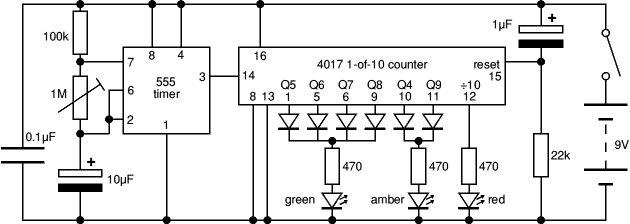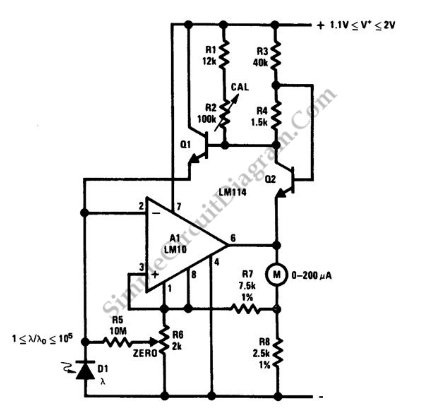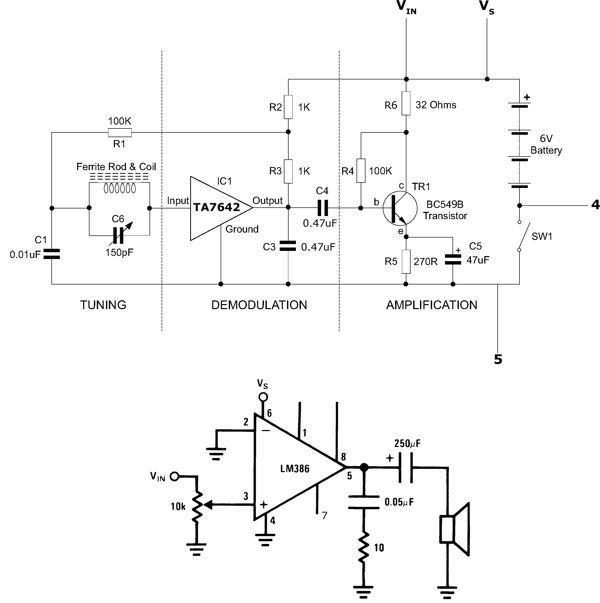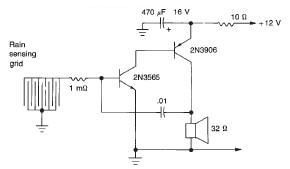
Traffic Light Project

This project operates red, amber, and green LEDs in the correct sequence for a single UK traffic light. The duration of the complete sequence—red, red & amber, green, amber—can be adjusted from approximately 7 seconds to about 2.5 minutes by modifying the 1M preset resistor. Due to some amber LEDs emitting light that is close to red, it may be preferable to use a yellow LED. The 555 astable circuit generates clock pulses for the 4017 decade counter, which features ten outputs (Q0 to Q9). Each output is activated sequentially as clock pulses are received. Specific outputs are combined with diodes to power the amber and green LEDs. The red LED is connected to the Q10 output, which remains high for the first five counts (Q0-Q4 high), thereby eliminating the need for five diodes for the red LED and simplifying the overall circuit design.
The circuit utilizes a 555 timer configured in astable mode to generate a continuous square wave signal. This signal acts as a clock input for the 4017 decade counter, ensuring that each output is activated in a sequential manner. The timing of the sequence is controlled by a variable resistor (1M preset), allowing for flexible adjustment of the overall cycle duration.
In the design, the red LED is powered directly from the Q10 output of the 4017, which remains high for the initial five counts (Q0 to Q4). This approach effectively reduces component count and complexity, as it eliminates the need for additional diodes that would otherwise be required to control the red LED. The amber and green LEDs are driven by specific outputs of the counter, with diodes ensuring that each LED operates correctly without interference from other outputs.
The circuit's operation can be summarized as follows: upon powering the circuit, the 555 timer begins oscillating, producing clock pulses that increment the counter. The first five pulses activate the red LED, followed by a transition to the amber LED with the next output. The green LED is activated subsequently, and finally, the amber LED lights up again before the cycle restarts. This sequence mimics a standard traffic light operation, providing a clear visual indication of traffic signals.
Overall, this circuit design is efficient, utilizing minimal components while maintaining functionality and adaptability for various timing requirements. The choice of LEDs, particularly the option to use a yellow LED instead of amber, enhances visibility and ensures adherence to traffic signal standards.This project operates red, amber and green LEDs in the correct sequence for a single UK traffic light. The time taken for the complete red - red & amber - green - amber sequence can be varied from about 7s to about 2 ½ minutes by adjusting the 1M preset.
Some amber LEDs emit light that is almost red so you may prefer to use a yellow LED. The 555 a stable circuit provides clock pulses for the 4017 counter which has ten outputs (Q0 to Q9). Each output becomes high in turn as the clock pulses are received. Appropriate outputs are combined with diodes to supply the amber and green LEDs. The red LED is connected to the G·10 output which is high for the first 5 counts (Q0-Q4 high), this saves using 5 diodes for red and simplifies the circuit. 🔗 External reference
The circuit utilizes a 555 timer configured in astable mode to generate a continuous square wave signal. This signal acts as a clock input for the 4017 decade counter, ensuring that each output is activated in a sequential manner. The timing of the sequence is controlled by a variable resistor (1M preset), allowing for flexible adjustment of the overall cycle duration.
In the design, the red LED is powered directly from the Q10 output of the 4017, which remains high for the initial five counts (Q0 to Q4). This approach effectively reduces component count and complexity, as it eliminates the need for additional diodes that would otherwise be required to control the red LED. The amber and green LEDs are driven by specific outputs of the counter, with diodes ensuring that each LED operates correctly without interference from other outputs.
The circuit's operation can be summarized as follows: upon powering the circuit, the 555 timer begins oscillating, producing clock pulses that increment the counter. The first five pulses activate the red LED, followed by a transition to the amber LED with the next output. The green LED is activated subsequently, and finally, the amber LED lights up again before the cycle restarts. This sequence mimics a standard traffic light operation, providing a clear visual indication of traffic signals.
Overall, this circuit design is efficient, utilizing minimal components while maintaining functionality and adaptability for various timing requirements. The choice of LEDs, particularly the option to use a yellow LED instead of amber, enhances visibility and ensures adherence to traffic signal standards.This project operates red, amber and green LEDs in the correct sequence for a single UK traffic light. The time taken for the complete red - red & amber - green - amber sequence can be varied from about 7s to about 2 ½ minutes by adjusting the 1M preset.
Some amber LEDs emit light that is almost red so you may prefer to use a yellow LED. The 555 a stable circuit provides clock pulses for the 4017 counter which has ten outputs (Q0 to Q9). Each output becomes high in turn as the clock pulses are received. Appropriate outputs are combined with diodes to supply the amber and green LEDs. The red LED is connected to the G·10 output which is high for the first 5 counts (Q0-Q4 high), this saves using 5 diodes for red and simplifies the circuit. 🔗 External reference





